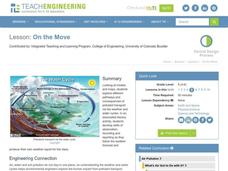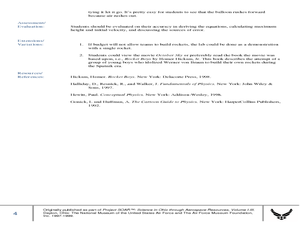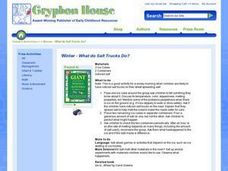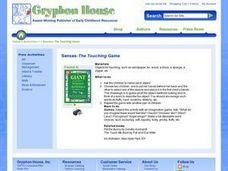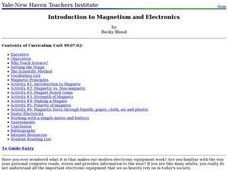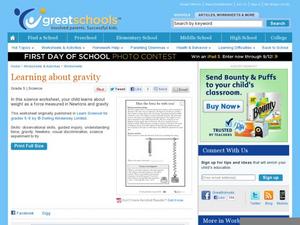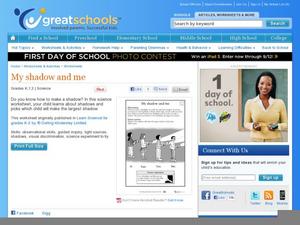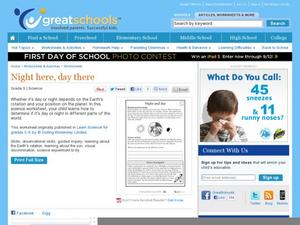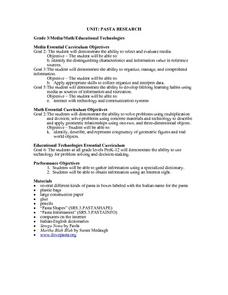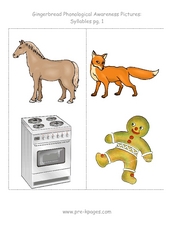Curated OER
On the Move
Students explore different pathways and consequences of pollutant transport via the weather and water cycles. They observe and record weather information and produce their own weather report for the class.
Curated OER
Balloon Rocket
Students observe a balloon rocket and how it relates to Newton's Third Law of Motion. In this balloon rocket lesson plan, students make a balloon rocket out of balloons, clothespins, straw, fishing line, and duct tape.
Curated OER
Rockets: Kinematics or Energy?
Students construct model rockets, measure and record the height of the launch. In this creative lesson students use different methods to calculate velocity and height data from their launched rockets.
Curated OER
Moving to the Frontier
Students explore the Frontier House website, examining the challenges of frontier settlement in the American West in the late 1800's. They develop budgets, and create displays based on their own research.
Curated OER
What Do Salt Trucks Do?
Students predict what will happen to ice when salt is put on it. They make observations and discuss what actually happened to the ice. They relate their experiment to the salt trucks they see on the street.
Curated OER
Senses -- The Touching Game
Students practice making educated guesses about objects in their hands. They guess what the object is without looking at it and choose a word that describes it. They practice using new vocabulary as well.
Curated OER
Weather -- Snowmen in May
Students are read the story "Snowballs" and discuss what the conditions must be for it to snow. They make snowmen out of snow when it snows outside. They discover what happens to their snowmen when they take them inside.
Curated OER
Introduction to Magnetism and Electronics
Learners are introduced to the concepts of magnetism and electronics. As a class, they walk through the steps of the scientific method and define new vocabulary. In groups, they are given a bag of objects and they are to separate them...
Curated OER
The Monarch Butterfly Watch
Young scholars explore monarch migration through the Journey North web site. In this butterfly lesson, students use the internet to identify a butterfly's migration pattern. Young scholars write in electronic journals.
Curated OER
Composition
Ninth graders, while looking and examining a photograph provided to them, write a composition that exemplifies the photograph with at least three of the five composition rules illustrated with 100% accuracy. The composition is the start...
Curated OER
It's Not Just Story Time... It's Learning Time!
Students look at picture books and describe the story elements. In this picture book lesson, students retell a story and begin to understand the story elements of plot, setting, and characters. Students complete graphic organizers to...
Curated OER
How Does Your KinderGarden Grow
Students find forecast and graph weather by using WeatherBug site, create flower books by using Wiggleworks, and plant radish seeds both on KidPix and in class garden.
Curated OER
Gene Puzzles
Students come to understand that in sexually reproducing organisms, such as humans, typically half of the genes come from each parent.
Students examine a fictional pedigree and determine which gene is responsible for a given trait. The...
Curated OER
Monitoring an Epidemic: Analyzing Through Graphical Displays Factors Relating to the Spread of HIV/AIDS
Tenth graders differentiate pandemic and epidemic. In this health science instructional activity, 10th graders analyze how HIV and AIDS affect different countries. They construct and interpret different types of graphs.
Curated OER
Read Aloud: "The Bookshop Dog"
Students listen to the book "The Bookshop Dog" and discuss what happens when there is a change in their lives. They create a class T-chart about changes and feelings, develop a graph related to the story, and define key story vocabulary...
Curated OER
Plants and Animals: Alike and Not Alike
After reading an informative paragraph that outlines some of the differences between plants and animals, fifth graders attempt to correctly categorize 12 words in a word bank. They must put them in the plant, or animal category. This...
Curated OER
Growing
Growing is part of being a living thing. Kindergartners decide which illustrations represent the life cycle of a living thing, then put a check mark next to the correct pictures. They then examine their own growth on a height chart.
Curated OER
Plants have needs, too!
Plants can die if they don't get enough sunlight and water. Kindergartners observe a picture of a hanging plant and grass under a tree, and interpret which each plant has died. Next, they grow watercress seeds in wet cotton to compare...
Curated OER
Feel the Vibrations
How does sound travel in a string walkie-talkie? Third graders read about the way vibrations act between two cups and a string. Next, they put the steps in order, and experiment with their own walkie-talkies.
Curated OER
Learning about gravity
Learn how to measure weight with newtons in a science experiment about gravity. After they read a short paragraph about force, fifth graders draw an arrow to indicate which way a spring is being pulled. Next, they survey their family...
Curated OER
My Shadow and Me
Practice making shadows with a kindergarten science experiment. After deciding which picture would represent the biggest shadow, kids use a flashlight to experiment with their own shadows. For extra fun, have kids mark their shadows...
Curated OER
Night Here, Day There
Explore astronomy with a lab sheet for fifth grade scientists. After reading a short explanation about the earth's rotation, they solve a word problem about the differences in times across the world. Next, they make a model of the solar...
Curated OER
Pasta Research
Third graders read the story STREGA NONA together as a class and discuss what they know about pasta. They each receive pieces of pasta to glue down on construction paper and write beneath each one what they think it looks like.
Curated OER
Gingerbread Phonological Awareness Pictures: Syllables
In this syllables worksheet, students say the name of the horse, fox, gingerbread man, and stove. Students listen to the phonological sounds and syllables in the words.
